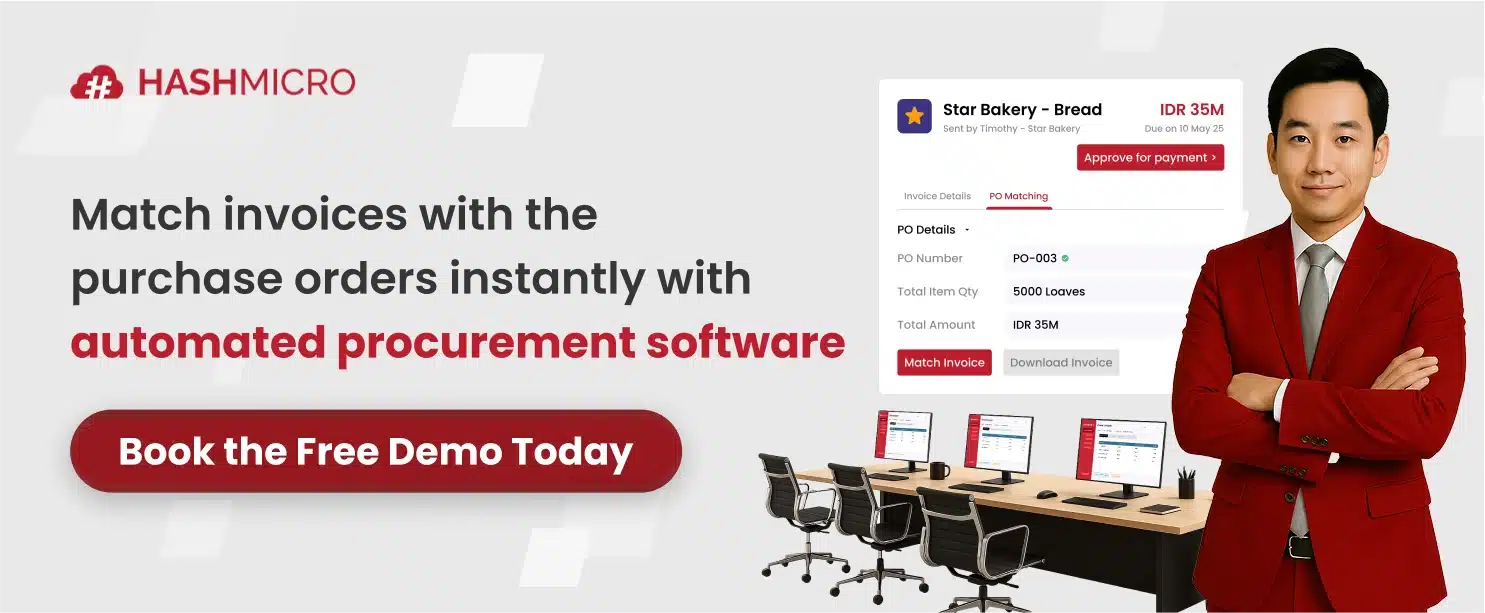When discussing procurement vs purchasing, many people mistakenly believe they are the same. However, understanding their differences is crucial for making informed decisions in your business operations.
Procurement is a strategic function that involves managing suppliers, contracts, and long-term value creation. In contrast, purchasing focuses on completing transactions, like ordering and receiving goods.
This article will break down the key distinctions between procurement and purchasing, helping you identify which process best suits your business needs. Let’s explore how each one works and why it matters.
Key Takeaways
|
What is Procurement?
Procurement is a strategic process for sourcing and acquiring goods or services for a business. It involves supplier evaluation, contract negotiation, and risk management. Procurement optimizes value, reduces costs, and maintains long-term supplier relationships.
Procurement involves a comprehensive strategy that goes beyond just the purchasing department. It requires long-term planning, supplier management, and cost analysis to meet business goals efficiently. Below are the critical steps involved in the procurement process:
- Recognize the business’s need for goods or services.
- Submit a purchase requisition (PR).
- Review the requisition package.
- Solicit and evaluate suppliers.
- Negotiate contracts and agreements.
- Manage orders and delivery.
- Approve or dispute invoices.
- Keep detailed records for auditing and tracking.
What is Purchasing?
Purchasing is the transactional process of acquiring goods or services for a business, typically focusing on placing orders, receiving products, and making payments. It is a subset of procurement aimed at fulfilling immediate needs focusing on price and order efficiency.
Purchasing focuses more on the transactional aspects of acquiring goods or services. It ensures the organization gets what it needs at the right price and time, with minimal disruption. Below are the steps in the purchasing process:
- Receive the purchase requisition (PR).
- Obtain and evaluate vendor quotes.
- Issue a purchase order (PO).
- Receive goods or services.
- Process payment through accounts payable (AP).
Key Differences Between Procurement & Purchasing
Understanding the differences between procurement and purchasing is crucial for optimizing business processes. The table below highlights these distinctions, helping you see how each function contributes to overall operational efficiency.
| Aspect | Procurement | Purchasing |
| Focus | Long-term goals like supplier relationships, cost savings, and efficiency. | Short-term fulfillment of goods or services at the best price. |
| Scope | Involves vendor selection, contract management, risk management, and spend analysis. | Limited to ordering, receiving, and ensuring payment for products/services. |
| Process | Strategic process encompassing supplier selection, risk management, and long-term planning. | The transactional process focuses on acquiring goods and services. |
| Impact on costs | Focuses on the total cost of ownership, considering indirect costs like maintenance. | Primarily concerned with reducing the direct price of goods. |
| Payment terms | Negotiates complex terms to align with business strategy. | Typically adheres to standard payment terms set during the procurement process. |
| Risk management | Evaluate and mitigate risks in contracts and supplier performance. | Limited to ensure timely delivery and quality of purchased goods. |
Procurement vs Purchasing, Which One Do You Need?
 When deciding between procurement and purchasing, you should consider your operational goals and the complexity of your supply chain needs. Understanding these distinctions helps align business practices with efficiency and cost-saving strategies.
When deciding between procurement and purchasing, you should consider your operational goals and the complexity of your supply chain needs. Understanding these distinctions helps align business practices with efficiency and cost-saving strategies.
Procurement is a strategic, end-to-end process that covers sourcing, negotiating, and supplier management, focusing on long-term value. However, purchasing is a transactional subset of procurement that deals with ordering and receiving goods.
Procurement is ideal if your business requires building supplier relationships and optimizing costs. However, purchasing might be more suitable for simpler, day-to-day transactions. Your decision depends on whether you need strategic management or quick, routine buying.
How Software Helps Procurement & Purchasing Processes
Implementing software can significantly enhance efficiency and accuracy when managing procurement & purchasing. Below are ways these tools benefit businesses, driving streamlined operations and improved decision-making.
Automation of manual tasks
A procurement system automates repetitive tasks such as purchase order approvals, invoicing, and inventory updates. This reduces human error and frees up time for teams to focus on strategic activities, ensuring faster completion of procurement processes.
Centralized data management
Procurement software tracks and manages information by consolidating all procurement and purchasing data into one platform. This centralization improves visibility, reduces duplication, and ensures more accurate data for informed decision-making.
Improved supplier and contract management
The software allows businesses to manage suppliers, contracts, and performance in one system. This improves supplier relationships through timely renewal and adherence to contract terms, benefiting contract negotiators and fostering long-term partnerships.
Enhanced visibility into spending
With procurement ERP, businesses can track expenditures in real time, allowing for better budget control. This visibility helps identify cost-saving opportunities, optimize spending, and ensure that purchases align with the company’s financial strategy.
Reduction of errors and delays
Manual processes are prone to errors and bottlenecks. The software minimizes these risks by automating data entry and approvals, ensuring that procurement tasks are completed on time without costly mistakes or delays.
Better compliance with procurement policies
The procurement management system ensures adherence to internal procurement policies and external regulatory requirements. It provides built-in checks, making it easier for organizations to maintain compliance and avoid costly penalties.
Informed decision-making through analytics
Procurement software and purchasing system offer advanced reporting and analytics tools. Through a performance monitor, these provide insights into spending patterns, supplier performance, and operational efficiency, enabling better decision-making and strategic planning.
Automate Your Procurement Process with HashMicro

HashMicro’s Procurement Management Software offers a robust ERP solution that automates the entire procurement process, from requisition to payment. It centralizes data, enabling businesses to efficiently manage suppliers, monitor purchases, and control spending on a single platform.
Additionally, HashMicro provides a free product tour and consultation without commitment, allowing businesses to explore the software’s features firsthand and understand how it can be customized to meet their needs.
Trusted by world-class companies, including McDonald’s, Hino, and Changi Airport Group, HashMicro’s software is recognized for its reliability and scalability, making it a preferred choice across multiple industries.
Features:
- PO, RFQ & PR Management: HashMicro efficiently manages purchase orders, requests for quotations, and purchase requisitions, streamlining procurement operations from request to delivery and ensuring accuracy and timely approvals.
- PR Approval Management: HashMicro’s software automates purchase requisition approvals, enabling multi-level authorization processes to minimize delays and ensure compliance with internal procurement policies.
- Online Portal for Suppliers: Suppliers can access a dedicated portal to manage orders, submit quotations, and track invoices, facilitating smoother communication and faster processing.
- Vendor/Supplier Rating: This feature evaluates and rates suppliers based on their performance, ensuring you select the best vendors for quality, delivery, and pricing, improving procurement decision-making.
- Blanket Order Management: HashMicro streamlines long-term supplier agreements by setting up blanket orders. This ensures recurring supply without the need to issue POs, saving time and effort repeatedly.
- Landed Cost Calculation: This software accurately calculates the total landed cost of products, including shipping, duties, and other fees, ensuring better financial forecasting and cost control.
Conclusion
Understanding the differences between procurement and purchasing is crucial for businesses to choose the right process that fits their operational needs. Selecting the right approach ensures business efficiency.
HashMicro Procurement Software is a comprehensive solution for automating procurement processes. The software streamlines workflows, centralizes data, and helps manage suppliers while controlling spending, offering a robust, scalable tool.
Interested in exploring how HashMicro can benefit your business? Schedule a free demo today to experience its powerful features firsthand and see how it can be customized for your needs.
Frequently Asked Questions About Procurement vs Purchasing
-
Is purchasing is also called procurement?
Purchasing is often used interchangeably with procurement, but they are different. Purchasing refers to buying goods or services, while procurement encompasses the entire process of sourcing, negotiating, and acquiring those goods or services, including supplier management.
-
What is the role of purchasing and procurement?
The role of purchasing is to execute the buying process, focusing on price and delivery. On the other hand, procurement involves a broader scope, including strategic activities such as supplier relationship management, cost analysis, and ensuring the quality and compliance of goods and services.
-
What is the difference between purchasing cycle and procurement cycle?
The purchasing cycle focuses on the transactional process of ordering and receiving goods, from requisition to payment. The procurement cycle covers sourcing, contract negotiation, supplier evaluation, and the entire lifecycle of acquiring goods and services beyond just the purchasing step.













